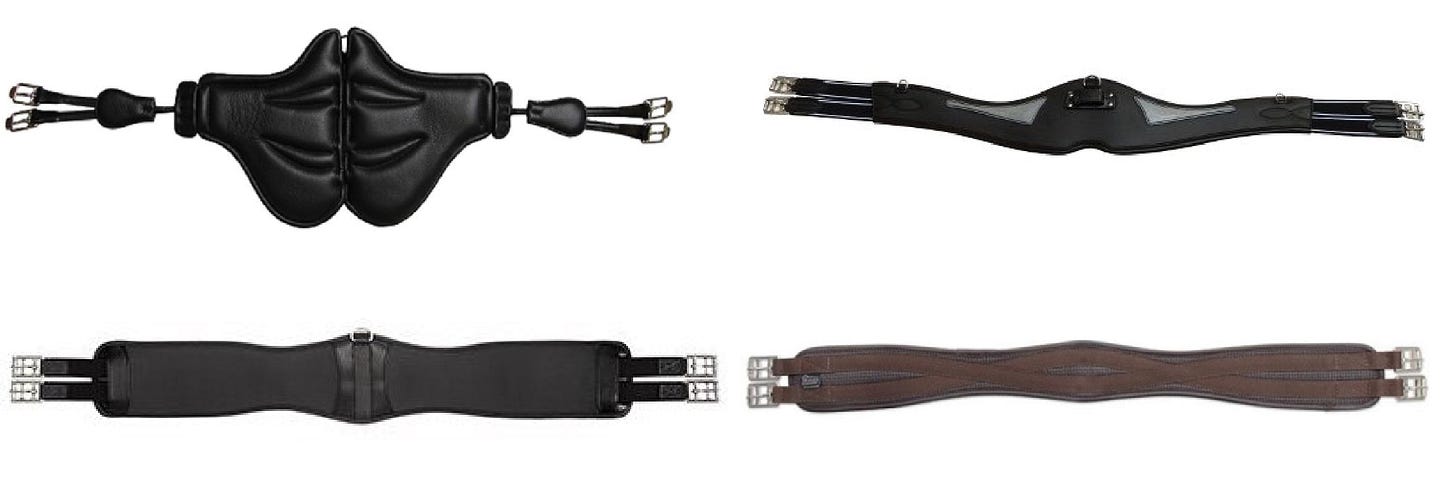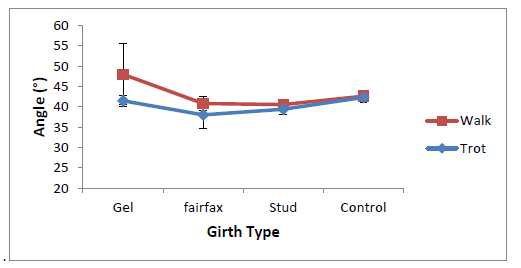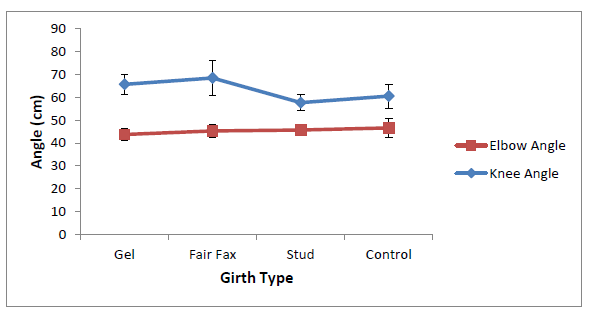The Effect of Girth Type on the Movements of the Ridden Horse
Does girth shape really have an effect on horses? My undergraduate dissertation
Equine Science Chronicles is a newsletter about equine science research, product dives and evidence based stable management for every horse owner or enthusiast.
Within horse care & management, the main tack focus is on saddle fitting, with riders and trainers alike recognizing its critical role in a horse’s performance. Yet, an aspect often goes overlooked: the fit of the girth. Despite its potential to alter saddle positioning and apply pressure that affects a horse's movement, girth fitting has not been seen to gain the same level of attention.
Exploring Girth Fit and Horse Performance
The aim of this study was to investigate the effect of girth type on kinematic variables associated with performance in the competition horse. This included stride length, stride duration, stride frequency, and the angles of key joints like the knee, elbow, hock, and stifle. The study also evaluated the horses’ top line angles during different gaits and while jumping.
Materials & Methods
The study involved six riding school horses of similar height and fitness, each subjected to four different girth types set to 12 kg tightness: their usual girth (control), a stud girth, a gel girth, and a pressure-relieving girth (Fairfax). High-speed video footage was captured as the horses moved through a runway at walk, trot, and canter, and over a fence. Performance parameters were measured and analyzed using the SPSS statistical package.
Findings
The results revealed no statistical significant differences (P>0.05) in the horses’ movements across the various gaits when different girths were used. However, some interesting trends emerged:
Stride Length at Trot: The Fairfax girth showed a tendency to increase stride length (1.41 ± 0.072 m) compared to the gel girth (1.28 ± 0.088 m).
Elbow Angle at Canter: The control girth led to a higher elevation of the forearm (75.0± 3.34°) compared to the Fairfax girth (80.1± 3.53°).
Forelimb Protraction at Walk: The gel girth resulted in a higher lift of the forearm (47.9 ±7.45°) compared to the stud girth (40.5 ±1.20°).
Knee Retraction Angle at Takeoff: The stud girth showed a lesser angle (57.6 ±3.44°), indicating a higher lift of the forearm at takeoff, compared to the Fairfax girth (68.4 ±7.86°).
Top Line Angle over Fences: The stud girth produced a larger top line angle (167.3 ±4.13°) than the Fairfax girth (163.6 ±5.22°), suggesting a better shape over fences.
Conclusion
The study concluded that girth type did not significantly affect gait quality or jumping technique in riding school horses. Despite the lack of statistically significant differences, the observed trends suggest that certain girths might influence specific aspects of a horse's movement.
If you like my work and wish to support it, you can buy me a coffee here. Please feel free to click the ❤️ button on this post so more people can discover it on Substack.




